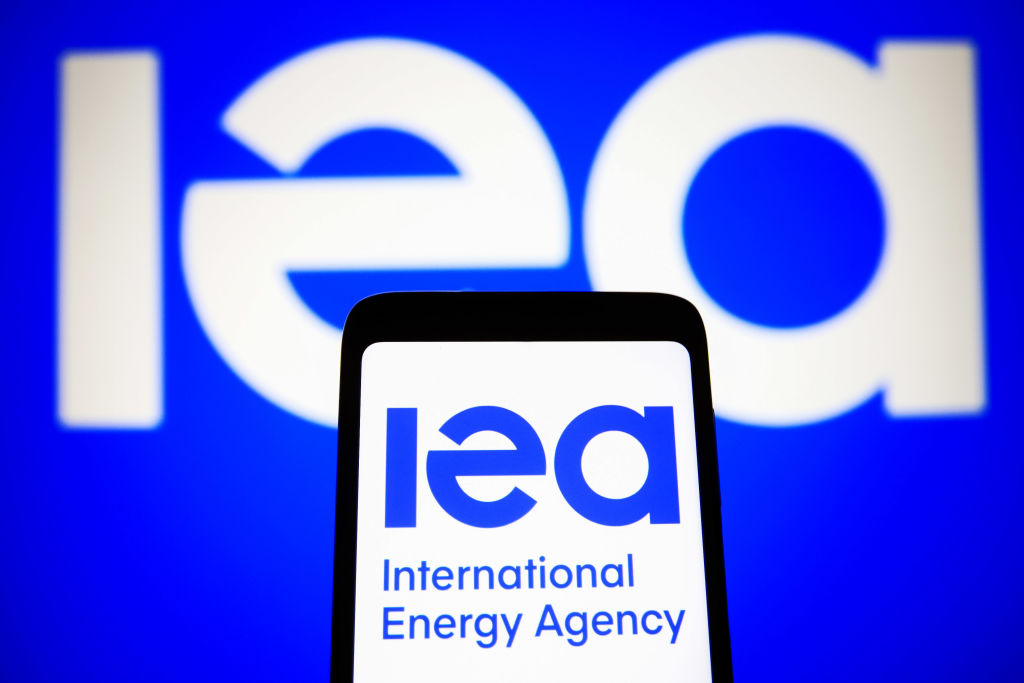Split the International Energy Agency

The IEA needs to be restructured for our times.
The International Energy Agency (IEA) turns 50 this year. It’s time to rethink the IEA’s role and for the United States, the biggest source of funding, to suspend IEA payments until it has been restructured for the times.
Why? Start with the fact that the IEA was created because of an “energy shock” that caused a global recession. The first quarter of 1974 saw a 400 percent jump in oil prices triggered by an Arab oil embargo. Policymakers and businesses everywhere scrambled to find reliable information about sources, supply chains, and options. The absence of such information was a key motivating factor for creating the IEA.
Today, the prospect of a mere 40 percent oil-price hike evokes political and market panic. Many believe that an “energy transition” reduces the risks today, and that’s where the naiveté begins—and it epitomizes the IEA’s problem. The need for reliable and affordable energy, especially oil, is greater today. And energy markets and geopolitics are at least as vulnerable.
Sure, a lot has changed. Social media, smartphones, never mind AI, didn’t exist in 1974. But overall progress has created a bigger world economy consuming more energy. Hydrocarbons still supply over 80 percent of all energy, and oil remains the geopolitical touchstone.
Oil fuels over 95 percent of all transportation. Economies collapse if transportation costs soar or, worse, ceases. Since 1974, the number of cars in the world is up 500 percent, maritime tons shipped are up 350 percent, and air passenger-miles have risen nearly 2,000 percent. The Middle East supplies even more oil today. Of course, the surprise for 1974 “peak oil” pundits; the leap in U.S. petroleum production. The energy future is going to look a lot like the past.
And no, electric vehicles and Tesla won’t change this equation. Even if batteries power half the world’s cars by 2034—an impossibly high goal—that would reduce global oil use just ten percent.
One is reminded of an aphorism from the great science fiction writer, Philip K. Dick: “Reality is that which, when you stop believing in it, doesn’t go away.” Lots of energy realities aren’t going away, including risks that geopolitical events echo the past.
Meanwhile, the IEA has strayed and adopted a new raison d’être that conflicts with being an unbiased source of vital energy facts. In 2015, the IEA formally adopted advocacy of an “energy transition,” doubling down in 2022 to include the mission “to guide countries…to comply with internationally agreed climate goals.” [emphasis added] The IEA stills reports on hydrocarbons, but it’s now psychically conflicted because of its eagerness to push policies to abandon hydrocarbons. Such ambitions themselves create, rather than ameliorate, risks of hydrocarbon disruptions. Those ambitions also create new risks for disruptions associated with energy alternatives.
Whatever one thinks about its goals, as an advocate the IEA is not constitutionally capable of operating as a disinterested player because it is now by animated hopes rather than by analyzing realities.
The stakes are high. European nations have spent trillions of dollars in pursuit of the “energy transition,” with plans to spend at least another $3 trillion by 2030. The U.S. has joined that pursuit with the biggest federal industrial policy spending program in history. The Inflation Reduction Act—which supporters admit is “the green new deal”—will lead to some $2 trillion to $3 trillion of alternative energy spending this decade.
In rough terms, the aim is to force a nearly 2-gigaton-per-year reduction in American CO2 emissions by 2030. By then, Asian emissions will increase by at least 2 gigatons per year (likely more). Asian industries dominate production of the alternative energy materials that the U.S. and Europe buy. Thus, in the end, at best, there’ll be no change in global emissions, but a huge exchange of capital. And, even if that spending happens, hydrocarbons will remain the dominant energy source in the 2030s.
Along the way, we’ll see a blizzard of new claims about capabilities, risks, sources of supply, environmental impacts, and especially energy security, reliability, and costs. However, when it comes to realities, facts and consequences will matter, not aspirations.
For example, building alternative energy hardware will require that the world double copper production, the anchor material in electricity domains; its physics make it nearly irreplaceable. Global mining industries aren’t planning or even capable of producing the quantities needed in the timeframes proposed. We’ll need to understand where copper, and the entire suite of critical materials needed to build alternative energy machinery, is mined, and refined. China is dominant.
Advocacy-free and credible energy information will be critical for policymakers and businesses. The simple solution. Break the IEA into a policy-free International Energy Information Agency (IEIA), and a stand-alone International Energy Transition Agency (IETA). The IEIA would be prohibited from advocacy, while the separately funded IETA would promote advocacy goals of its member countries.
Given realities of international organizations, suspending payments is the only mechanism for forcing reform. There’s a long history of such by numerous presidents seeking to reform various international agencies. President Reagan did that with UNESCO in 1984, to much media hullabaloo, because it had strayed from its humanitarian mission.
Perhaps facts cannot supersede politics in our society. But we should at least try to improve confidence in the facts about the energy infrastructures that underpin civilization. We can start by reforming the IEA.
The American Mind presents a range of perspectives. Views are writers’ own and do not necessarily represent those of The Claremont Institute.
The American Mind is a publication of the Claremont Institute, a non-profit 501(c)(3) organization, dedicated to restoring the principles of the American Founding to their rightful, preeminent authority in our national life. Interested in supporting our work? Gifts to the Claremont Institute are tax-deductible.
